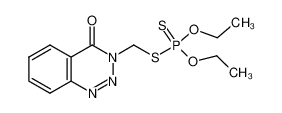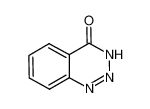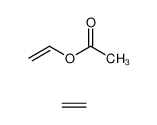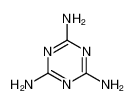| Product name | azinphos-ethyl |
|---|
| Product number | - |
|---|---|
| Other names | Bionex |
| Identified uses | For industry use only. Insecticide |
|---|---|
| Uses advised against | no data available |
| Company | MOLBASE (Shanghai) Biotechnology Co., Ltd. |
|---|---|
| Address | Floor 4 & 5, Building 12, No. 1001 North Qinzhou Road, Xuhui District, Shanghai, China |
| Telephone | +86(21)64956998 |
| Fax | +86(21)54365166 |
| Emergency phone number | +86-400-6021-666 |
|---|---|
| Service hours | Monday to Friday, 9am-5pm (Standard time zone: UTC/GMT +8 hours). |
Acute toxicity - Oral, Category 2
Acute toxicity - Dermal, Category 3
Hazardous to the aquatic environment, short-term (Acute) - Category Acute 1
Hazardous to the aquatic environment, long-term (Chronic) - Category Chronic 1
2.2 GHS label elements, including precautionary statements| Pictogram(s) | 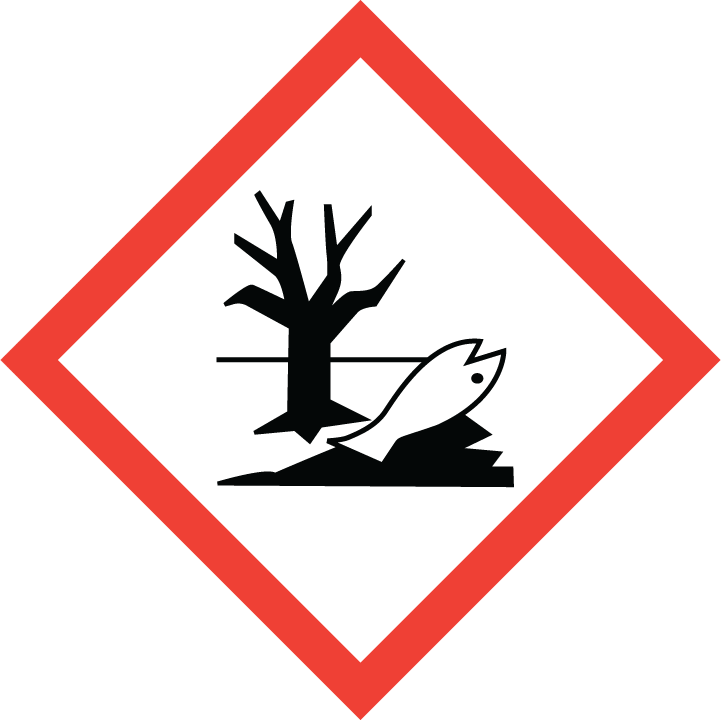 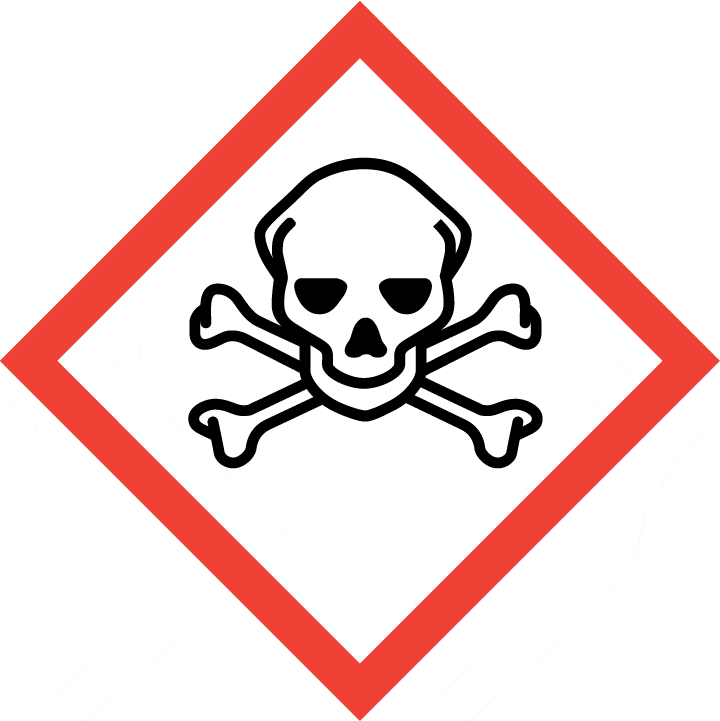 |
|---|---|
| Signal word | Danger |
| Hazard statement(s) | H300 Fatal if swallowed H311 Toxic in contact with skin H410 Very toxic to aquatic life with long lasting effects |
| Precautionary statement(s) | |
| Prevention | P264 Wash ... thoroughly after handling. P270 Do not eat, drink or smoke when using this product. P280 Wear protective gloves/protective clothing/eye protection/face protection. P273 Avoid release to the environment. |
| Response | P301+P310 IF SWALLOWED: Immediately call a POISON CENTER/doctor/… P321 Specific treatment (see ... on this label). P330 Rinse mouth. P302+P352 IF ON SKIN: Wash with plenty of water/... P312 Call a POISON CENTER/doctor/…if you feel unwell. P361+P364 Take off immediately all contaminated clothing and wash it before reuse. P391 Collect spillage. |
| Storage | P405 Store locked up. |
| Disposal | P501 Dispose of contents/container to ... |
none
3.Composition/information on ingredients 3.1 Substances| Chemical name | Common names and synonyms | CAS number | EC number | Concentration |
|---|---|---|---|---|
| azinphos-ethyl | azinphos-ethyl | 2642-71-9 | none | 100% |
Consult a physician. Show this safety data sheet to the doctor in attendance.
If inhaledIf breathed in, move person into fresh air. If not breathing, give artificial respiration. Consult a physician.
In case of skin contactWash off with soap and plenty of water. Consult a physician.
In case of eye contactRinse thoroughly with plenty of water for at least 15 minutes and consult a physician.
If swallowedNever give anything by mouth to an unconscious person. Rinse mouth with water. Consult a physician.
4.2 Most important symptoms/effects, acute and delayedThe systemic effects of this compound are similar to parathion. It is an extremely potent systemic toxicant via ingestion, inhalation and skin contact. It may cause death or permanent injury after very short exposure to small quantities. (EPA, 1998)
4.3 Indication of immediate medical attention and special treatment needed, if necessaryAtropine and enzyme-reactivating agents counteract the effects of azinphos-ethyl.
5.Fire-fighting measures 5.1 Extinguishing media Suitable extinguishing mediaSelf contained breathing apparatus with a full facepiece operated in pressure demand, or other positive pressure mode /should be used in firefighting/. /Parathion/
5.2 Specific hazards arising from the chemical(Non-Specific -- Organophosphorus Pesticide, n.o.s.) When heated to decomposition, it emits very toxic fumes of sulfur, phosphorus and nitrogen oxides. Container may explode in heat of fire. (EPA, 1998)
5.3 Special protective actions for fire-fightersWear self-contained breathing apparatus for firefighting if necessary.
6.Accidental release measures 6.1 Personal precautions, protective equipment and emergency proceduresUse personal protective equipment. Avoid dust formation. Avoid breathing vapours, mist or gas. Ensure adequate ventilation. Evacuate personnel to safe areas. Avoid breathing dust. For personal protection see section 8.
6.2 Environmental precautionsPrevent further leakage or spillage if safe to do so. Do not let product enter drains. Discharge into the environment must be avoided.
6.3 Methods and materials for containment and cleaning up1. Ventilate area of spill or leak. 2. Collect for reclamation, or absorb in vermiculite, dry sand, earth, or a similar material. /parathion/
7.Handling and storage 7.1 Precautions for safe handlingAvoid contact with skin and eyes. Avoid formation of dust and aerosols. Avoid exposure - obtain special instructions before use.Provide appropriate exhaust ventilation at places where dust is formed. For precautions see section 2.2.
7.2 Conditions for safe storage, including any incompatibilitiesStore in original container, preferably in locked storage, away from children, food, or feed.
8.Exposure controls/personal protection 8.1 Control parameters Occupational Exposure limit valuesno data available
Biological limit valuesno data available
8.2 Appropriate engineering controlsHandle in accordance with good industrial hygiene and safety practice. Wash hands before breaks and at the end of workday.
8.3 Individual protection measures, such as personal protective equipment (PPE) Eye/face protectionSafety glasses with side-shields conforming to EN166. Use equipment for eye protection tested and approved under appropriate government standards such as NIOSH (US) or EN 166(EU).
Skin protectionWear impervious clothing. The type of protective equipment must be selected according to the concentration and amount of the dangerous substance at the specific workplace. Handle with gloves. Gloves must be inspected prior to use. Use proper glove removal technique(without touching glove's outer surface) to avoid skin contact with this product. Dispose of contaminated gloves after use in accordance with applicable laws and good laboratory practices. Wash and dry hands. The selected protective gloves have to satisfy the specifications of EU Directive 89/686/EEC and the standard EN 374 derived from it.
Respiratory protectionWear dust mask when handling large quantities.
Thermal hazardsno data available
9.Physical and chemical properties| Physical state | Azinphos-ethyl is a colorless crystals. Used as a non-systemic insecticide with good ovicidal properties and long persistence. Used on cotton, citrus, vegetables, potatoes, tobacco, rice, and cereals to control caterpillars, beetles, aphids, spiders and many other insects. Not registered for use in the U.S. (EPA, 1998) |
|---|---|
| Colour | Colorless needles |
| Odour | no data available |
| Melting point/ freezing point | 53ºC |
| Boiling point or initial boiling point and boiling range | 444.7ºC at 760 mmHg |
| Flammability | no data available |
| Lower and upper explosion limit / flammability limit | no data available |
| Flash point | 222.7ºC |
| Auto-ignition temperature | no data available |
| Decomposition temperature | no data available |
| pH | no data available |
| Kinematic viscosity | no data available |
| Solubility | SOL IN ORG SOLVENTS EXCEPT PETROLEUM ETHER AND ALIPHATIC HYDROCARBONS |
| Partition coefficient n-octanol/water (log value) | log Kow = 3.40 |
| Vapour pressure | 4.2E-08mmHg at 25°C |
| Density and/or relative density | 1.43 g/cm3 |
| Relative vapour density | no data available |
| Particle characteristics | no data available |
no data available
10.2 Chemical stabilityThermo-stable ... readily hydrolyzed by alkali.
10.3 Possibility of hazardous reactionsThe BPS Pesticide incident in Helena resulted in an explosion and death of three firemen. The burning of a 1,000 pound sack of Azinphos Methyl or the flashing of Maneb which was present on the facility may have caused the explosion. Azinphos Ethyl may behave similarly. At elevated temperatures, it will decompose generating toxic gases.
10.4 Conditions to avoidno data available
10.5 Incompatible materialsContact with oxidizers may cause the release of phosphorous oxides. Contact with strong reducing agents, such as hydrides, may cause the formation of flammable and toxic phosphine gas.
10.6 Hazardous decomposition productsWhen heated to decomposition it emits very toxic fumes of /phosphorous oxides, sulfur oxides, and nitrogen oxides/.
11.Toxicological information Acute toxicity- Oral: LD50 Rat oral 7 mg/kg
- Inhalation: LD50 Rat inhalation 0.15 mg/L air/4 hr
- Dermal: LD50 Rat percutaneous about 500 mg/kg/24 hr
no data available
Serious eye damage/irritationno data available
Respiratory or skin sensitizationno data available
Germ cell mutagenicityno data available
Carcinogenicityno data available
Reproductive toxicityno data available
STOT-single exposureno data available
STOT-repeated exposureno data available
Aspiration hazardno data available
12.Ecological information 12.1 Toxicity- Toxicity to fish: LC50; Species: Oncorhynchus mykiss (rainbow trout) weight 1.4 g; Conditions: Static bioassay without aeration, 13°C, pH 7.2-7.5, water hardness 40-50 mg/L as calcium carbonate and alkalinity of 30-35 mg/L; Concentration: 20 ug/L for 96 hr (95% confidence limit 17-22 ug/L) /Technical, 88%
- Toxicity to daphnia and other aquatic invertebrates: EC50; Species: Daphnia magna (Water Flea) 1st instar larvae; Conditions: freshwater, static, 21°C, pH 7.1, hardness 44 mg/L CaCO3; Concentration: 4 ug/L for 48 hr (95% confidence interval: 3-5.3 ug/L); Effect: intoxication, immobilization /88% purity technical material
- Toxicity to algae: no data available
- Toxicity to microorganisms: no data available
AEROBIC: The methyl analogue, azinphos methyl, biodegraded in laboratory tests and in soil(1,2) which suggests that azinphos ethyl would also be degraded in the environment(SRC). The half-life of azinphos ethyl in seawater (pH 8.1), river water (pH 7.3) and filtered river water (pH 7.3) was 58, 65 and 36 days, respectively when incubated in the absence of light, in closed 2.5 Liter amber bottles at 22°C(3).
12.3 Bioaccumulative potentialAn estimated BCF of 80 was calculated in fish for azinphos ethyl(SRC), using a log Kow of 3.40(1) and a regression-derived equation(2). According to a classification scheme(3), this BCF suggests the potential for bioconcentration in aquatic organisms is moderate(SRC).
12.4 Mobility in soilUsing a structure estimation method based on molecular connectivity indices(1), the Koc of azinphos ethyl can be estimated to be 170(SRC). According to a classification scheme(2), this estimated Koc value suggests that azinphos ethyl is expected to have moderate mobility in soil. Using a lysimeter to measure the leachability of various pesticides, azinphos ethyl was not detected in leachate from 3,000 individual analyses conducted from 1977-1986 (detection limit 0.001 mg/L)(3). These tests were conducted using 1-1.3 m in height by 0.5 sq m of top soil with a catch base of 1 sq m(3). For soil material, loamy or silty sand with a low humus content was used where the sum of clay and silt amounted to a maximum of 30% (clay below 10%) and the content of organic bound carbon did not exceed 1.5%(3).
12.5 Other adverse effectsno data available
13.Disposal considerations 13.1 Disposal methods ProductThe material can be disposed of by removal to a licensed chemical destruction plant or by controlled incineration with flue gas scrubbing. Do not contaminate water, foodstuffs, feed or seed by storage or disposal. Do not discharge to sewer systems.
Contaminated packagingContainers can be triply rinsed (or equivalent) and offered for recycling or reconditioning. Alternatively, the packaging can be punctured to make it unusable for other purposes and then be disposed of in a sanitary landfill. Controlled incineration with flue gas scrubbing is possible for combustible packaging materials.
14.Transport information 14.1 UN Number| ADR/RID: UN2783 | IMDG: UN2783 | IATA: UN2783 |
| ADR/RID: ORGANOPHOSPHORUS PESTICIDE, SOLID, TOXIC |
| IMDG: ORGANOPHOSPHORUS PESTICIDE, SOLID, TOXIC |
| IATA: ORGANOPHOSPHORUS PESTICIDE, SOLID, TOXIC |
| ADR/RID: 6.1(a) | IMDG: 6.1(a) | IATA: 6.1(a) |
| ADR/RID: II | IMDG: II | IATA: II |
| ADR/RID: yes | IMDG: yes | IATA: yes |
no data available
14.7 Transport in bulk according to Annex II of MARPOL 73/78 and the IBC Codeno data available
15.Regulatory information 15.1 Safety, health and environmental regulations specific for the product in question| Chemical name | Common names and synonyms | CAS number | EC number |
|---|---|---|---|
| azinphos-ethyl | azinphos-ethyl | 2642-71-9 | none |
| European Inventory of Existing Commercial Chemical Substances (EINECS) | Listed. | ||
| EC Inventory | Listed. | ||
| United States Toxic Substances Control Act (TSCA) Inventory | Not Listed. | ||
| China Catalog of Hazardous chemicals 2015 | Listed. | ||
| New Zealand Inventory of Chemicals (NZIoC) | Not Listed. | ||
| Philippines Inventory of Chemicals and Chemical Substances (PICCS) | Listed. | ||
| Vietnam National Chemical Inventory | Not Listed. | ||
| Chinese Chemical Inventory of Existing Chemical Substances (China IECSC) | Listed. | ||
| Creation Date | Aug 18, 2017 |
|---|---|
| Revision Date | Aug 18, 2017 |
- CAS: Chemical Abstracts Service
- ADR: European Agreement concerning the International Carriage of Dangerous Goods by Road
- RID: Regulation concerning the International Carriage of Dangerous Goods by Rail
- IMDG: International Maritime Dangerous Goods
- IATA: International Air Transportation Association
- TWA: Time Weighted Average
- STEL: Short term exposure limit
- LC50: Lethal Concentration 50%
- LD50: Lethal Dose 50%
- EC50: Effective Concentration 50%
- IPCS - The International Chemical Safety Cards (ICSC), website: http://www.ilo.org/dyn/icsc/showcard.home
- HSDB - Hazardous Substances Data Bank, website: https://toxnet.nlm.nih.gov/newtoxnet/hsdb.htm
- IARC - International Agency for Research on Cancer, website: http://www.iarc.fr/
- eChemPortal - The Global Portal to Information on Chemical Substances by OECD, website: http://www.echemportal.org/echemportal/index?pageID=0&request_locale=en
- CAMEO Chemicals, website: http://cameochemicals.noaa.gov/search/simple
- ChemIDplus, website: http://chem.sis.nlm.nih.gov/chemidplus/chemidlite.jsp
- ERG - Emergency Response Guidebook by U.S. Department of Transportation, website: http://www.phmsa.dot.gov/hazmat/library/erg
- Germany GESTIS-database on hazard substance, website: http://www.dguv.de/ifa/gestis/gestis-stoffdatenbank/index-2.jsp
- ECHA - European Chemicals Agency, website: https://echa.europa.eu/





